We use lots of plain-old SR106 Schottky diodes to measure liquid helium temperatures (4K-20K) where I work. They are great, and cheap as hell.
You need a constant current source (we use 10 or 100 uA, mostly to reduce heating and boiloff), and you really, really should use 4-wire connections, but all you really need for the electronics are the diode, and op-amp for the current source, an instrumentation amp for reading the voltage back, and a handful of passives.
The tricky bit is the calibration, but assuming you have a temperature meter that works at those temperature, you can just use that as a transfer standard.
We actually have a few of the fancypants, expensive cryo-specific diodes like @ user16653 mentioned in the comments to @Theran's answer, and they really aren't distinguisable from the cheap, homemade sensors which is just a SR106 epoxied into a little copper block, to make it easy to thermally strap to the device under test.
The primary advantage of the commercial cryo diode sensors is they are calibrated, but if you have one that's calibrated, you can just use it as a transfer standard to calibrate all your other homemade sensors pretty easily, and at that point, they all work about the same.
This circuit is a precision current source for driving a diode in a cryogenic system.
Basically, there is a -10V precision reference (not shown. Note that the reference is negative) that comes in on the right. It's divided down in VR1, and buffered through U1B.
Now, U1A will strive to keep the voltage at it's inputs equal, since we have the output connected back to the negative input (through the diode).
This means that the voltage at pin 2 of the U1 will be maintained very, very close to 0V. However, no* current can flow in or out of the op-amp input (they're high impedance), and no current can flow through C1, so basically the only path for current to flow into the negative summing node of op-amp U1A is through the diode.
Therefore, the current flowing through R6 is equal** to the current flowing through the diode. Since we know the voltage at the pin (functionally it's 0V), we can easily calculate the diode current, since we know the voltage at TPC, and the resistance of R6.
C1 reduces the loop bandwidth, to keep the circuit stable. You could experimentally reduce it's value until the circuit oscillates, if you need lots of bandwith, but that seems unlikely for a thermal application.
R10 is just there to protect the op-amp in the event of something stupid happening, like the output leads getting shorted.

Note that you need a fairly decent negative voltage reference, as drift in your negative voltage reference will directly result in drift in your bias current, causing incorrect measurements.
You should also use a decently low tempco resistor for R6 (metal film at the minimum).
In real-world applications, I just stuck a precision ammeter in place of D1, and tuned the pot to get the current I wanted, rather then bothering calculating it out from the math, but either approach would work.
You should also use a decent, low offset & low bias current op-amp. Analog devices makes lots of nice parts.
* technically, a extremely small current flows in or out of the inputs of all real-world op-amps. If you're using a modern, low-bias-current op-amp, it's small enough that we're ignoring it here.
** see above note about op-amp input bias currents.

